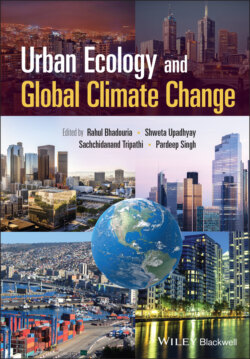Читать книгу Urban Ecology and Global Climate Change - Группа авторов - Страница 22
1.3.1 Urban Ecosystems as Indicators of Future Ecosystems
ОглавлениеUrban ecosystems having comparatively higher temperature as compared to their surrounding (rural) areas are viewed as projections of the future ecosystems in the context of climate change (Grimm et al. 2008). These ecosystems represent the locations where human activities utilise higher proportion of primary productivity and produce comparatively higher amount of GHGs (CO2 emission); thus, influencing the global C cycle (Gaston et al. 2013; Mitchell et al. 2018). Land‐use change‐related urban expansion has been reported as the cause of ~5% (1.38 PgC) emissions from the deforestation in the pan‐tropics during the first three decades of the twenty‐first century (Seto et al. 2012). Recent estimates on C‐estimation revealed high potential of C‐storage in the urban ecosystems, even at higher magnitude as proposed earlier (Davies et al. 2011). Therefore, researches on measuring the citywide C‐stock and C‐sequestration potential of different cities are the hot topics of research which will further help in developing strategies for climate change mitigation (Pedersen Zari 2019). Further, the development of novel plant communities and their formation processes under the combined impact of urbanisation and climate change may impact the health and livelihood of urban inhabitants (Knapp et al. 2017; Lososová et al. 2018). Healthy ecosystems have self‐regulating capacity by regenerating the ecological and social health enabling humans to better adapt to the climate change, therefore, enabling the cities to evolve this ability should be the priority agenda of the future urban planning (Pedersen Zari 2019). A detailed insight on the impact of climate change on the urban flora has been given in the next sub‐section.
